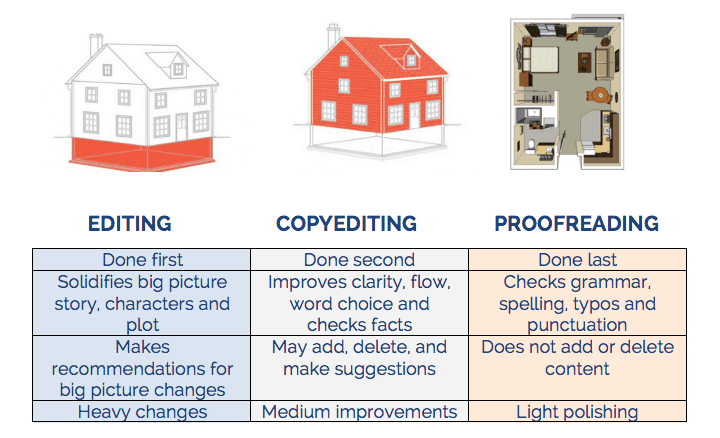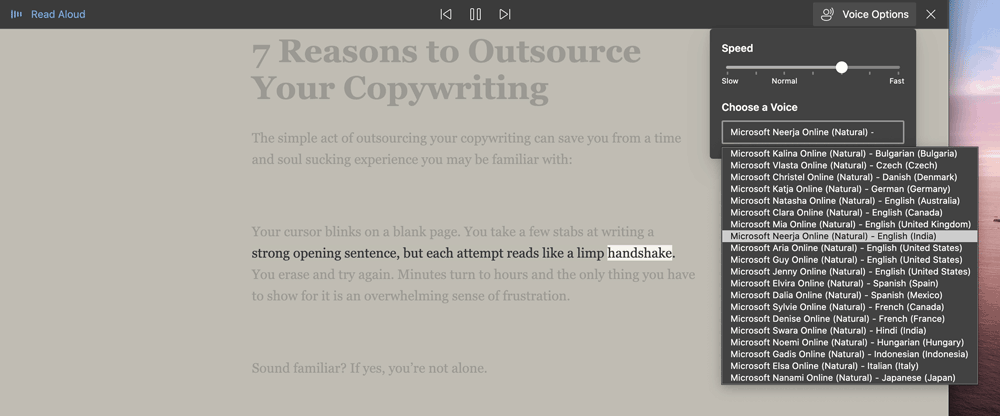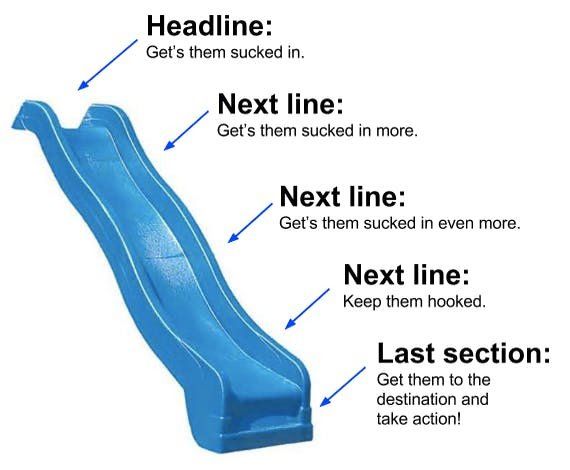What is Copyediting?
Copyediting is the leading cause of hair loss among writers.
Why?
Because tragically, some copyeditors lack a clear understanding of the nature of their work and how they can support a writer.
So what is copyediting? Well copyediting is what improves the quality and readability of a piece of writing. It’s a copyeditor's job to make sure a text is clear, accurate, and concise. In short, to make it the best it can be.
If a writer is lucky and works with an experienced copyeditor, they can indeed become a better writer. The notes they receive can be invaluable.
But, if a writer's editor is, say, a corporate marketing team - the notes may be something like: "make the press release more
wow" - with no specific or clear suggestions for improvement.
So in this article, we'll cover what copyediting is and how you can make the most of it. Plus, we'll share some tips and a checklist of what to look for.
Hope it helps!

Copyediting vs. Proofreading
The words copyedit and proofread are sometimes synonymous, but they are in fact different.
Proofreading is a basic, mechanical process done at the very end before publishing. It is the last line of defense to ensure there are no more lingering spelling and grammar errors.
Copyediting requires more of a 'judgement call'. Copyeditors consider the style, choice of words, turns of phrase, and placing of punctuation to make ideas more digestible and more impactful.
Both proofreading and copyediting are important and require careful attention to detail. But remember that they occur at different stages in the production process.
Let's say you want to build out your website.
Your process may look like this:
- You do a bit of research and choose a relevant keyword that you can rank for. (One way is to look for keywords that rank forums.)
- You search the term and browse the top ranking pages. You look at the topics they cover and identify what types of information Google currently believes will satisfy the searcher.
- You create an outline based on this research and the value or 'hot take' you want to add to the top ranking pages that's missing (look at questions asked on Quora or a related subreddit).
- You or a writer create a high-quality piece of content that closely follows your outline.
- Your editor then goes over the content to see what can be expanded, condensed, or removed. This broad feedback is known as substantive editing.
- You or the writer then go back and revise the piece based on these edit suggestions.
- Your copyeditor then looks over the revised piece with a fine-tooth comb. Their goal is to follow the style guide and help deliver the idea in the cleanest package possible.
- You then go over the piece for a final proofread and triple check to make sure all minor errors are fixed.
- You publish the piece.
- Your team promotes the hell out of it and ask around if relevant sites to link to it.
Now keep in mind there are apps that can help you proofread and copyedit.
Grammarly can help you proofread.
Hemmingway is great to help you copyedit.
ProWritingAid can help you do a bit of both.
But these apps can’t do 100% of the job for you.
Hemingway app, for example, confuses Grammarly as an adverb because it ends in 'ly'.
English is full of exceptions to rules and so software can stumble on these idiosyncrasies.
You can and should use these tools with your work, but they can not replace the skills of an experienced human eye.
(But it will be fun to see how well this opinion ages.)
Download Your Copyediting Checklist Here
What’s a Style Guide?
Style guides are essentially standard operating procedures (SOPs) for your content team. They help maintain writing and editing standards.
They are guidelines used by magazines, websites, and any other publication to maintain a consistent voice.
There are tons of different style guides out there. Many notable publications have their own internal manuals known as 'house guides'.
The Economist style guide
is a great example. It opens with an important note for any B2B copyeditor to keep in mind. It also helps to illustrate the kinds of things you find in a style guide.
“The first requirement of The Economist is that it should be readily understandable. Clarity of writing usually follows clarity of thought. So think what you want to say, then say it as simply as possible.”
Dreyer's English is also a great style guide by long-time Random House copy chief Benjamin Dreyer. He has copyedited 100s of acclaimed books and his thoughts are a helpful reference point.
Choosing a guide and sticking with it will help to answer questions that may arise while writing and editing. It will also help you maintain consistency if you ever want to
outsource copywriting.
The guide can include everything from 'big topics' like tone; to small details, like whether to use the number or the word.
The Copyediting Process
The first thing you should do if you're copyediting is read through the entire document - out loud.
I add out loud because this is the most effective way to spot any clunkiness in the text.
Here's a little hack if you ever feel too tired to read out loud:
Highlight the text, right click, and press print.
Save it as a PDF.
Go into your downloads, again right click, and press open with Microsoft Edge.
Here you can use the read aloud feature to transform your life.
Choose a voice and speed that fits your preference. You can change it to nearly any accent you can think of.
(I recommend the Neerja voice at a faster than normal speed;)
I could (and do) talk all day about this feature. It can read to you any webpage or PDF book you have. But I digress.
Again, with this first read through, you're looking for unnatural flow and tonal shifts. Make a note when you find them.
Sentences
After the first read through, you will then go through and assess each sentence on their individual merits:
Are there any parts that seem unclear?
Is anything missing or repetitive?
Can you rephrase something to improve its clarity?
Can you start a sentence with rather? ;)
Is there filler that adds nothing but word count?
Answering these questions will help you make sure the text is more accessible for the reader. And where your sentences play such an important role.
In his book The Art of Plain Talk, the great Dr. Rudolf Flesch says language consists of sentences.
We try to express what goes on in our minds using sentences. Thus, to learn how to say things simply, we must start not with our words, but with our sentences.
Another great point he mentions in the book is that you should aim to include only one idea per sentence.
You can add more than one idea, but only if they are closely related. Our aim should always be to keep sentences short and easy to understand.
Making sure ideas are clear in sentences is also the job of a
line editor. (There's a great example here of the different ways line editors and copyeditors edit sentences.)
In the likely event you don't have a line editor, a copyeditor can play both roles.
The goal is for each sentence to flow into the next and keep the reader engaged. One great tip for writers and editors to follow is Joseph Sugarman's idea of a slippery slide. (His book 'Advertising Secrets of the Written Word' where he describes this technique is fantastic.)
You want readers to spend more time on your page. Designing each sentence to hook readers into the next does just that.
This is especially helpful for landing pages or sales pages. Although we cover all sorts of hooks in
essay hooks!
Your goal here is to keep readers engaged to follow the sentences down to a desirable call to action.
Attention to detail is also key here. One task of a copyeditor is to spot irregular spacing and dropped or repeated words in a sentence.
You should also make sure that every word makes sense within the context of the sentence. If certain words are being repeated often, look for ways to cut them or use synonyms instead.
Punctuation
During this second read through, your copyeditor must also look out for punctuation.
Periods, commas, colons, semicolons, hyphens, etc. are all examples of punctuation. They are some of the most effective tools to help the reader digest your words.
In today's style of writing, trends seem to move away from punctuation.
There seems to be less talk around the dinner table about whether you can put a comma before or after but in a sentence.
Instead, commas are replacing semicolons. And even hyphens are being removed from words like e-mail. Language is being simplified down to its barebones for those in a hurry.
A famous example of this is Cormac McCarthy's The Road. Punctuation is largely stripped away with only periods and a few commas and colons remaining.
Here’s an example of some dialogue in the book:
What are you eating.
Whatever we can find.
Whatever you can find.
Yeah. He looked at the boy. You wont shoot, he said.
That's what you think.
You aint got but two shells. Maybe just one. And they'll hear the shot.
Yes they will. But you wont.
No quotation marks. Not even a question mark (although they do occasionally appear in the book).
There's nothing inherently wrong with any of this. It's just important to remember that the lack of punctuation in The Road is a literary device.
Punctuation is sparse to help highlight the bleakness and loss of life in the story's setting.
But when done well, punctuation can be a great way to highlight your personality in writing.
You can use it to 'write like you talk'. It’s also more eye-catching. You can use a dash to add a pause, an exclamation mark to emphasize an idea, and brackets for a quick aside.
It may be unpopular among the 'cool kids', but that's likely because they're jaded from too much time online and have lost their humanity.
But like everything, it's probably best to avoid the extremes. Use it correctly with some moderation and try not to overdo it.
Grammar and Spelling
Of course, one of the most important tasks of a copyeditor is to ensure the spelling and grammar are correct.
Have you ever read an ebook or article and noticed spelling and grammar mistakes? Did it make you think less of the piece and everyone involved? You probably did.
We want the information we digest to be of high quality. Spelling and grammar mistakes can suggest something is low quality and even unprofessional.
This is an odd impulse. What really matters is the quality of the ideas behind the words. But, if the spelling and grammar are off, they'll distract from the ideas.
Thankfully, we are blessed with copyeditors, spellcheck and other apps mentioned in this article. They can be a huge help with spelling and grammar.
They may have even saved a lot of us from embarrassment at some point. But sometimes, they too make mistakes.
For instance, it is important to know who your audience is. British and American English are surprisingly different. In fact, they are so different that the Economist Style Guide has an entire section on it.
I am Canadian, so I have lived with an internal conflict on which way is best all my life.
Should I add the 'u' to 'color' even though that sounds like 'coloor' or 'colhour'?
Which way you choose should largely depend on your target audience and what they're accustomed to.
What Skills Does a Copyeditor Need?
A copyeditor needs to have both excellent writing skills and a sharp eye for details.
Every sentence must be read carefully and changed to its best version.
This task is certainly not for everyone. It is rare to find both abilities in a person. That's why if you find someone with both, it is best to hold on to dear life.
It may seem dramatic, but consider for a moment some of the various skills a good copyeditor needs.
- Excellent writing skills. Again, their job is to refine a piece of content to be more clear and engaging. This includes:
- Headline writing.
- Crafting strong hook sentences.
- Optimizing sentence structure.
- Clarity in writing (ideally showing strong interpersonal skills).
- An understanding of the target audience and their expectations.
Plus the more technical qualities of writing like:
- A strong grasp of the conventions of grammar.
- A sharp eye for typographical errors.
- Proper spelling.
- Style consistency.
- A keen eye for punctuation mistakes.
Keep in mind, it also helps if your copyeditor has a working knowledge of SEO.
Finding a copyediting provider who also makes sure your titles, intros, sub-headers, and meta-descriptions can engage readers while including appropriate keyword placement can be a huge plus.
How are Copyediting Services Priced?
Copyediting is best paid for by the hour or by the project.
It's not good to pay by the word because the amount of work required for each project varies widely. This is not only in length but also in the amount of words and effort required.
To help reach a fair estimate, it's recommended that clients send a sample of one of their drafts for edit. This helps to give copyeditors a clearer picture of the work required.
Paying by the hour or by the project affords the copyeditor the ability to go through the text and do a proper job. You won't have to worry that they're making changes just to earn a bit of extra money.
Personally, I like to price it per project. This helps to define clear expectations upfront.
Please note that when pricing per project, it is important to define and agree on very clear boundaries of what's to be delivered with a quote.
This avoids any nickel and diming on both sides. And creates a win-win approach for both you and the copyeditor.
What You Should Look For in a Copyediting Service
Experience and a proven track record are key.
Projects have different goals, so not every point discussed in this article relates. But, in terms of web copy, you'll want to make sure that what you publish will at least add a bit more value than your competitors.
You'll want a service provider that can go over the content for inaccuracies, grammatical errors, and tonal consistency (one voice).
They'll also have to fix spelling mistakes, formatting issues like spacing between sentences.
Ideally, you want to find a copyeditor with:
- A clear pricing arrangement.
- An easy-to-use service.
- Access to examples of previous projects.
- Good communication throughout the entire process.
- Clear terms & conditions.
- Proofreading services available.
If you want a reliable service to deliver all your copyediting needs for you, our team at 8-Bit Content is happy to help!
Blog
Let’s grow your online visibility together!
Join our newsletter for actionable tips and checklists!
Contact Us
You can also find us here:







